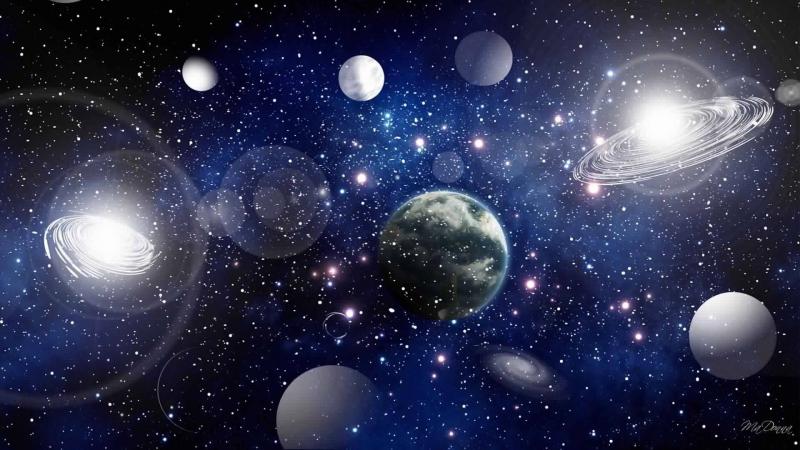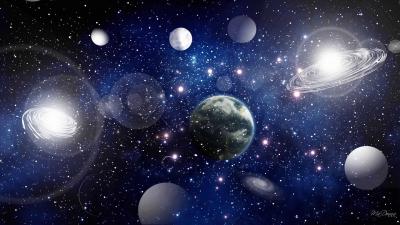With the beginning of the universe's formation, the countdown began for a process that eventually led to the conditions suitable for the emergence of life on planet Earth. While the future of the universe is believed to be incredibly dark, the present remains fascinating. So, what has happened since the formation of the universe?
1. **Everything Started About 13.7 Billion Years Ago**
It is believed that the universe began approximately 13.7 billion years ago during the "Big Bang." The exact timing of this event is uncertain, but we know the universe's age is greater than 13.5 billion years and less than 14 billion years. Various space missions have yielded slightly different estimates concerning the universe's age. According to data collected by the European Space Agency's Planck mission between 2009 and 2013, the universe is estimated to be around 13.82 billion years old. Another estimate based on observations from the Atacama Cosmology Telescope in Chile suggests the universe's age is about 13.77 billion years.
2. **Atoms Formed About 380,000 Years After the Big Bang**
It is believed that lighter subatomic particles such as quarks, electrons, and neutrons began to form about 10 to the power of -6 seconds after the Big Bang. However, the temperatures were still so high that physics, as we understand it today, could not exist. Shortly after the first 10 to the -6 seconds, physicists believe the universe cooled enough to begin forming protons and neutrons. After this, there were no significant developments for about 380,000 years. Around this time, the fundamental atom, hydrogen, began to form, and simultaneously, some elements fused to create helium atoms.
3. **Lights Spread Almost Simultaneously**
With the formation of atoms, energy was released in the form of light, creating what is known today as the "cosmic microwave background," where the absorption of free electrons made the universe transparent. Prior to this, the universe was opaque as free electrons would have scattered light (photons). After about 400 million years following the Big Bang, the universe emerged from what is known as the "dark ages." This period, more accurately termed the "reionization era," saw dynamic changes believed to have lasted until the universe reached about a billion years old. However, recent observations suggest that reionization may have occurred much faster than previously thought. During this time, gas groups condensed enough to form the first stars and galaxies. The ultraviolet radiation produced by these active events stripped away and destroyed most of the surrounding neutral hydrogen gas.
4. **Early Stars Were First Observed**
The star Methuselah, also known as HD 140283, is recognized as the oldest star in the universe. It is located about 190.1 light-years from Earth in the constellation Libra, near the border with Ophiuchus in the Milky Way galaxy. Methuselah's age is estimated to be over 13 billion years, which is close to the age of the universe. However, its exact age remains unclear.
5. **Discovery of Galaxies Formed After the Big Bang**
In July 2021, the James Webb Space Telescope (JWST) captured an image of a galaxy called GLASS-z13, believed to have formed about 300-400 million years after the Big Bang. The JWST also discovered another very early galaxy named GLASS-z11. Based on a mass equivalent to that of a billion suns, research suggests both galaxies are about 500 million years old.
6. **A Turbulent Past for Our Galaxy**
The Milky Way galaxy is believed to have formed when massive clouds of gas and dust collapsed under gravity. The formation process is thought to have started with the creation of a spherical halo, followed shortly by the emergence of a dense, bright disk. However, recent research indicates that the formation was far from simple, likely involving numerous collisions and mergers with smaller galaxies. Data from the Gaia space observatory has revealed that some of the oldest stars, expected to be found in the galaxy's halo, are actually located in the disk. This suggests that the history of stellar movements and galaxy formation is more complex than previously thought. The results indicate that the Milky Way has ever been static; it has evolved over billions of years through gravitational interactions and mergers with other star systems. According to some astronomers, the Milky Way and the neighboring Andromeda galaxy are set to collide in about 5 billion years.
7. **It Will All End in A Cold, Undignified Death or Vice Versa**
Based on current evidence, "Big Freeze" or "Heat Death" is the most likely scenario for the universe's end. The universe may continue to expand indefinitely, ultimately reaching a state of maximum entropy (approaching absolute zero temperature). At this point, as most gas is depleted, star formation will cease, existing stars will burn out, and black holes will evaporate through what is known as "Hawking Radiation." This would lead to a cold, dark void. However, one theory points to the "Big Crunch," suggesting that the universe may reverse its expansion and collapse into a hot, dense state, potentially leading to another Big Bang and beginning it all anew. While these theories are intriguing, we will never know for certain what will happen, as humanity will likely have long vanished by that time.




